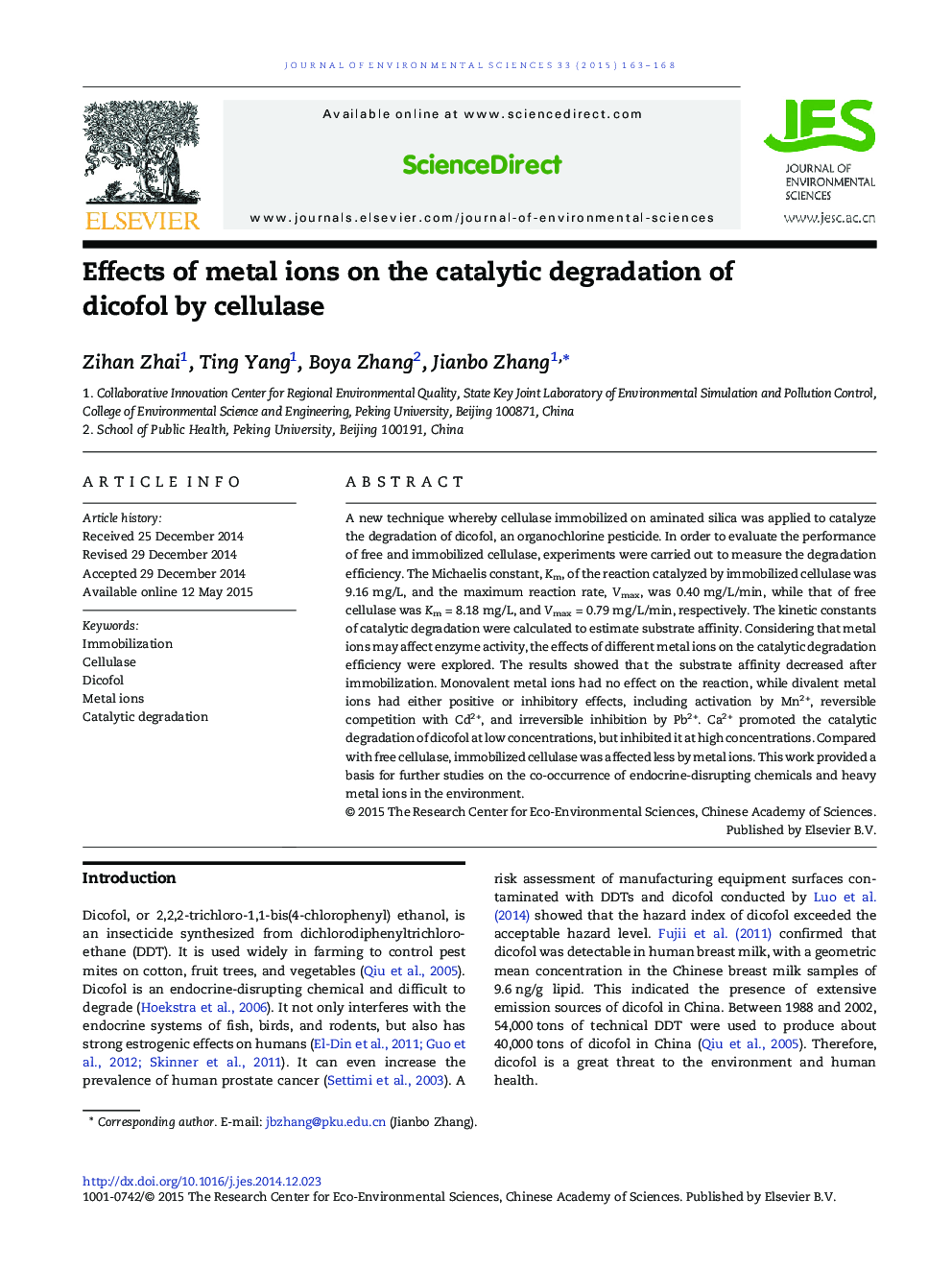| کد مقاله | کد نشریه | سال انتشار | مقاله انگلیسی | نسخه تمام متن |
|---|---|---|---|---|
| 4453988 | 1620820 | 2015 | 6 صفحه PDF | دانلود رایگان |
A new technique whereby cellulase immobilized on aminated silica was applied to catalyze the degradation of dicofol, an organochlorine pesticide. In order to evaluate the performance of free and immobilized cellulase, experiments were carried out to measure the degradation efficiency. The Michaelis constant, Km, of the reaction catalyzed by immobilized cellulase was 9.16 mg/L, and the maximum reaction rate, Vmax, was 0.40 mg/L/min, while that of free cellulase was Km = 8.18 mg/L, and Vmax = 0.79 mg/L/min, respectively. The kinetic constants of catalytic degradation were calculated to estimate substrate affinity. Considering that metal ions may affect enzyme activity, the effects of different metal ions on the catalytic degradation efficiency were explored. The results showed that the substrate affinity decreased after immobilization. Monovalent metal ions had no effect on the reaction, while divalent metal ions had either positive or inhibitory effects, including activation by Mn2 +, reversible competition with Cd2 +, and irreversible inhibition by Pb2 +. Ca2 + promoted the catalytic degradation of dicofol at low concentrations, but inhibited it at high concentrations. Compared with free cellulase, immobilized cellulase was affected less by metal ions. This work provided a basis for further studies on the co-occurrence of endocrine-disrupting chemicals and heavy metal ions in the environment.
Figure optionsDownload as PowerPoint slide
Journal: Journal of Environmental Sciences - Volume 33, 1 July 2015, Pages 163–168
